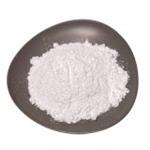Defination
Proteases (EC 3.4.21.62) belong to the class of enzymes known as hydrolases, which catalyze hydrolysis of various bonds in presence of water. Proteases are also referred to as Peptidases or Proteinases. Proteases catalyze proteolysis of peptide bonds in polypeptides, proteins and selective hydrolysis of carboxylic esters and amino esters. There are different classes of Proteases, i.e. serine, threonine, cysteine, aspartate, glutamic acid and metallo – proteases.

Chemical Properties
These are proteolytic enzymes which take the form of light-colored, free-flowing powders. A protein containing numerous amino acids
Uses
This is a proteolytic enzyme isolated from the fermentation of
Bacillus licheniformis. It is a serine endoproteinase with a broad specificity towards native and denatured proteins, and is active under alkaline conditions. It is for use in Total Dietary Fiber Assays (TDF-100A).
Uses
Protease from
Bacillus sp. has been used to determine its proteolytic activity by spectrophotometric method.
Uses
Protease from
Bacillus licheniformis has been used to digest the neurolemma in the antennal lobe of the moth;
Heliothis virescens.
General Description
Proteolytic enzymes are known to possess catalytic, non-catalytic and ancillary domains. Proteases are broadly classified as endopeptidases and exopeptidases. Functionally they are divided as aspartic, glutamic, cysteine, threonine, serine and metalloproteases.
Biochem/physiol Actions
Protease catabolizes proteins by hydrolysis of peptide bonds. Proteases are inactivated by serine active-site inhibitors, such as phenylmethylsulfonyl fluoride (PMSF) and diisopropylfluorophosphate. Proteases, secreted from Bacillus sp., typically have molecular weights ranging from 20,000 to 30,000. They are typcially stabilized by Ca2+ and have high isoelectric points.
Safety Profile
Moderately toxic by ingestion. Aneye irritant. When heated to decomposition it emits toxicfumes of NOx.
Potential Exposure
These commercial proteolytic enzymes are used in laundry detergent formulations
Purification Methods
This alkaline protease is purified 211-fold by affinity chromatography using 4-(4-aminophenylazo)phenylarsonic acid complex to activated CH-Sepharose 4B. It is inhibited by 2-phenylethane boronic acid, PMSF, 3,4-dichloroisocoumarin, acetone and benzamide. [Chandraskaren & Dhar Anal Biochem 150 141 1985, Schomburg & Schomburg Springer Handbook of Enzymes 2nd Edn vol 7 p 286 2002.] Synexin (from bovine liver) M 47,000 Da. This Ca binding protein is purified by (NH4)2SO4 precipitation, then by a specific pH step elution from a chromatofocusing medium in the absence of ampholytes. The pI is 7.5. [Scott et al. Anal Biochem 149 163 1985.]
Incompatibilities
Incompatible with oxidizers (chlorates, nitrates, peroxides, permanganates, perchlorates, chlorine, bromine, fluorine, etc.); contact may cause fires or explosions. Keep away from alkaline materials, strong bases, strong acids, oxoacids, epoxides.
Toxics Screening Level
The initial threshold screening level (ITSL) for subtilisins is 0.0006 μg/m 3 (1-hour averaging time).







